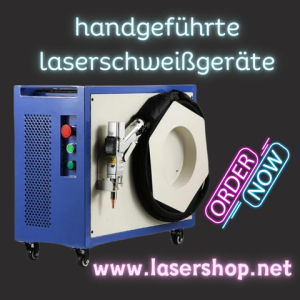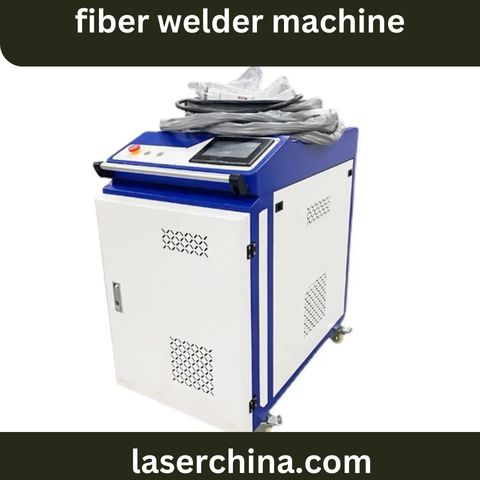The fiber welder machine has become an essential tool in the evolving world of metal fabrication. Its role in precision joining, clean welds, and efficient processing has transformed traditional welding into a highly advanced and controllable operation. Industries ranging from automotive and aerospace to electronics and manufacturing have shifted toward fiber laser welding because it offers reliability, control, and minimal material distortion. This article explores the operational core, industrial applications, and performance insights of the fiber welder machine in today’s production landscape.
Understanding the Functionality of a Fiber Welder Machine
A fiber welder machine operates using a high-powered laser beam transmitted through a fiber optic cable. This beam is focused on the joint between two materials, causing localized melting and fusion. The process is clean, fast, and repeatable, ensuring consistent results across various metals and thicknesses.
Unlike conventional arc welding, where electrical current creates an arc between electrode and workpiece, the fiber laser welding system uses a concentrated light source. This light is directed with extreme precision, leading to deeper penetration and smoother seams. The minimal heat input reduces the heat-affected zone (HAZ), preserving the base metal’s integrity and mechanical properties.
Its configuration includes a laser source, beam delivery system, focusing optics, and control interface. These components operate in synchronization, producing stable welds suitable for high-demand environments like automotive component assembly or fine electronic enclosures.
Applications Across Industries
The fiber welder machine is integrated into various production lines where accuracy and quality are essential. In the automotive sector, it is used for welding car body components, exhaust systems, and battery housings for electric vehicles. The precision and speed allow manufacturers to maintain uniform quality even under high production volumes.
In the aerospace industry, where component reliability is paramount, the machine ensures tight joints with minimal structural changes to the surrounding material. It plays a key role in assembling aircraft components made from titanium, aluminum, and nickel alloys.
In electronics manufacturing, the fiber welder machine is valued for its ability to join miniature parts without causing thermal stress. It supports the production of sensors, circuit housings, and connectors that demand fine weld lines and excellent surface finish.
Medical equipment manufacturing also benefits from this technology. Surgical instruments, implants, and stainless-steel assemblies rely on laser welding for biocompatibility and precision. The process ensures a contamination-free joint and smooth surface finish, which is essential for hygiene and functionality.
Operational Precision and Energy Efficiency
A major reason for the growing popularity of the fiber welder machine is its precision control. Modern systems are integrated with computer-based parameters that regulate beam intensity, focus depth, and travel speed. This results in welds with minimal spatter and reduced need for post-processing.
The energy efficiency of fiber lasers is another factor driving industrial adoption. Since most of the power input converts directly into laser energy, less energy is wasted as heat. This not only reduces operating costs but also extends the machine’s component lifespan.
The stability of the fiber laser system allows continuous operation with minimal maintenance. The absence of consumable electrodes or filler materials simplifies the workflow, making it more efficient for automated or robotic welding lines.
Role in Modern Manufacturing
Manufacturers constantly seek ways to improve productivity without compromising quality. The fiber welder machine fits perfectly into this goal. Its compatibility with robotic arms and automated systems enables high-speed, multi-axis welding operations.
In smart manufacturing setups, fiber welders are often integrated into CNC systems or robotic cells, ensuring precise control over welding paths and parameters. Sensors and cameras monitor the process in real-time, allowing instant adjustments for alignment or temperature fluctuations.
This combination of automation and laser precision enhances production consistency, reduces downtime, and improves throughput in sectors where even the smallest defect can lead to costly rework.
Material Versatility and Adaptability
One of the distinguishing characteristics of a fiber welder machine is its ability to weld a wide range of metals, including stainless steel, carbon steel, aluminum, brass, and copper. The machine adapts to each metal type by adjusting beam parameters and focal distance.
For reflective materials like copper and aluminum, fiber lasers provide better absorption rates compared to CO₂ systems. This ensures strong joints even in metals that traditionally posed welding challenges.
The adaptability extends beyond materials — it includes diverse applications such as spot welding, seam welding, and deep penetration welding. This flexibility makes the fiber welder suitable for both mass production and custom fabrication projects.
Quality Assurance and Process Control
Maintaining consistent weld quality is crucial in industrial production. The fiber welder machine is equipped with advanced monitoring systems that record and analyze key parameters during each weld.
Sensors detect fluctuations in temperature, beam intensity, or material surface condition. When irregularities occur, the system can automatically adjust the settings or alert operators. This intelligent control ensures that every weld meets the required standards without human error.
In many industries, quality documentation is part of compliance requirements. Fiber welder machines can generate digital records of weld data for traceability and certification, which supports ISO and safety compliance processes.
Cost and Maintenance Perspective
From an operational perspective, the fiber welder machine minimizes long-term expenses through efficiency and durability. Its solid-state laser design eliminates the need for regular gas replacement or consumable parts.
Routine maintenance is limited to checking cooling systems, lens cleanliness, and fiber integrity. The modular design of most systems allows for easy replacement of parts without significant downtime.
The higher initial investment is often balanced by the extended operational life, lower energy consumption, and reduced labor cost. Many manufacturers view this as a strategic investment in sustainable production technology.
Integration with Automation and Robotics
The fiber welder machine is engineered for integration with industrial automation systems. Robotic arms can perform precise movements while the laser head maintains consistent focus and beam quality. This collaboration between machine and automation boosts efficiency in repetitive or high-volume tasks.
For industries using Industry 4.0 systems, fiber welders can connect to digital networks, enabling remote monitoring, predictive maintenance, and real-time performance tracking. Such connectivity allows production managers to analyze data and optimize workflows for maximum output.
Environmental Considerations
In an era focused on sustainable manufacturing, the fiber welder machine supports eco-friendly operations. It consumes less power, produces minimal waste, and eliminates the need for filler materials or chemical agents.
The clean, smoke-free process contributes to a healthier working environment. Additionally, its precision reduces the amount of scrap metal generated during production, supporting resource conservation and efficiency.
This sustainability aspect aligns well with global efforts to reduce industrial emissions and energy consumption while maintaining high-quality production standards.
Future Outlook
The future of the fiber welder machine lies in its expanding capabilities. Continuous developments in laser sources, cooling systems, and control software will further enhance its performance. Compact and portable models are already being introduced for on-site welding and repair tasks.
As industries move toward more automated, data-driven production systems, the fiber welder will play an even more integral role. The integration with smart technologies, sensors, and machine learning algorithms will make it capable of self-calibration and adaptive control.
This evolution marks the transition from traditional manual welding to intelligent, precision-controlled laser welding that defines the next era of manufacturing.
Final Thoughts
The fiber welder machine represents a significant leap in modern fabrication technology. Its combination of precision, speed, and adaptability makes it suitable for industries that demand reliability and quality. By merging laser technology with automation and process intelligence, it helps manufacturers achieve higher productivity, consistent output, and sustainable operations.
Whether used in automotive plants, aerospace workshops, or medical device production, this tool continues to redefine how metals are joined with accuracy and efficiency. The fiber welder machine is not just a welding solution—it is a cornerstone of next-generation industrial performance.






